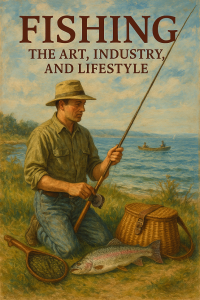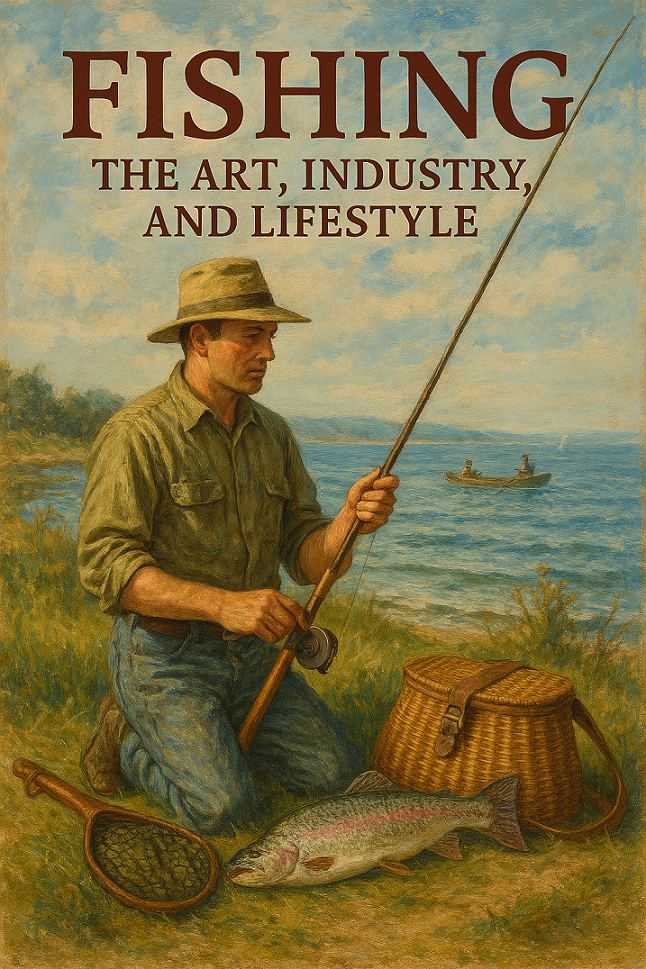Discover the world of fishing—from hobby and sport to a global maritime industry. Explore techniques, trends, environmental impact, career opportunities, and more in this comprehensive guide for learners, professionals, and enthusiasts alike.

🌊 Why Fishing Matters More Than Ever Today
Have you ever wondered why fishing remains one of the most practiced and valued activities worldwide?
From ancient traditions to modern fishing tech, this timeless act provides food, jobs, cultural identity, and even stress relief.
Whether you’re a teen looking for a weekend hobby, a professional in the maritime industry, or a marketer studying consumer behavior in outdoor sports—this article is your gateway to understanding fishing from every angle.
📚 What Is Fishing? A Simple Yet Powerful Definition
At its core, fishing is the act of catching aquatic animals—primarily fish, but also crustaceans, mollusks, and other marine species—from oceans, lakes, rivers, and streams.
🎯 Main Categories of Fishing:
-
Commercial Fishing 🛥️: Large-scale operations for global food supply.
-
Artisanal Fishing 🌾: Small-scale, often traditional and sustainable.
-
Recreational Fishing 🎣: Hobby, sport, and leisure-based.
-
Scientific Fishing 🔬: For research, conservation, or ecological assessments.
-
Subsistence Fishing 🍽️: For local or family consumption.
🌐 Why Fishing Is Important (Beyond the Hook)
💼 Economic Impact
-
Global seafood market = $150+ billion USD annually
-
Employs over 60 million people directly, according to the FAO
-
Vital to economies in developing countries and coastal regions
🧬 Nutritional Value
-
Fish provide essential omega-3 fatty acids, protein, and micronutrients
-
Over 3 billion people rely on seafood as their primary protein source
🧭 Cultural Significance
-
Fishing is deeply tied to coastal traditions, rituals, and indigenous knowledge
-
Plays a role in literature, folklore, and local identities
⚙️ Key Concepts and Techniques in Fishing
| 🎣 Method | 📖 Description | 🌍 Common Use |
|---|---|---|
| Trawling | Dragging a net along the seabed or midwater | Commercial fishers (shrimp, cod) |
| Longlining | Hooks on a main line extending for kilometers | Tuna, swordfish |
| Purse Seining | Circular nets trap schooling fish | Sardines, anchovies |
| Gillnetting | Nets entangle fish by the gills | Coastal & artisanal fisheries |
| Spearfishing | Diving or snorkeling with spear guns | Sport or small-scale fisheries |
| Fly Fishing | Using artificial flies with special rods & lines | Rivers and lakes (trout, salmon) |
✅ Pro Tip for Beginners: Start with shore fishing or pier fishing—low-cost, accessible, and beginner-friendly.
📈 Applications & Real-World Examples
🧪 Students & Researchers
-
Study the impact of fishing gear on biodiversity
-
Conduct surveys on fish population and habitat loss
-
Collaborate with marine authorities for sustainability assessments
⚓ Maritime Industry Professionals
-
Monitor fish migration routes for safer navigation
-
Understand fishing vessel safety standards (STCW-F)
-
Design cold storage systems and supply chains
🏢 Companies & Marketing Professionals
-
Outdoor brands target fishing gear for a $12B+ recreational fishing market (U.S. alone)
-
Tourism operators build experiences around local fishing culture
-
Food retailers promote traceability & sustainability of seafood
🔍 Fishing in a Digital & Eco-Conscious Era: Trends (2024–2025)
🚀 Smart Fishing Tools
-
GPS, sonar, and AI-powered fish finders
-
Apps like Fishbrain or Navionics for real-time data sharing
🌱 Sustainability & Traceability
-
Certifications like MSC (Marine Stewardship Council) & ASC
-
Blockchain tech to track catch origin (“boat-to-plate” traceability)
🧠 Fishing for Mental Health
-
Studies show recreational fishing helps reduce stress, anxiety, and depression
-
It’s also being used in youth engagement and therapy programs
🧠 Frequently Asked Questions (FAQs)
❓Is fishing legal everywhere?
No. Fishing often requires licenses or permits, and areas may have protected species or seasons.
❓What are the environmental concerns around fishing?
Overfishing, bycatch, and habitat damage are key issues. Sustainable practices are helping reduce harm.
❓Can I make a career out of fishing?
Yes! Roles include marine biologist, fisheries officer, fishing vessel crew, or seafood industry marketing manager.
❓What is STCW-F certification?
It’s a safety training requirement for personnel on fishing vessels, under the IMO framework.
🌍 Fishing Around the World: Fun Facts
-
Iceland: Fishing contributes to nearly 40% of its export revenue
-
Japan: Combines tradition (ikejime) with advanced fishing tech
-
Africa: Over 200 million people rely on small-scale fisheries
-
USA: Recreational fishing is more popular than golf or tennis combined
-
Iran & the Persian Gulf: Rich in artisanal and industrial fisheries, including shrimp, sardine, and tuna exports
📚 Conclusion: Why Fishing Is for Everyone
Fishing is more than just a rod, reel, and line. It’s a science, a culture, a livelihood, a sport, and a sanctuary.
From the coastal villages of Southeast Asia to the harbors of the Mediterranean, from city teenagers discovering pier fishing to ocean scientists tracking bluefin tuna—fishing unites people across professions, generations, and geographies.
🎯 Learn More:
Whether you’re an enthusiast, a student, a startup, or a seafarer—explore training, tools, and deeper insights on MaritimeEducation.com 🌊
📖 References & Further Reading
-
FAO Report – The State of World Fisheries and Aquaculture 2022: Read Here
-
Marine Stewardship Council (MSC): www.msc.org
-
NOAA Fisheries: www.fisheries.noaa.gov
-
“Why We Fish: The Psychology of Angling” – Outdoor Life Journal
-
EU Fisheries & Aquaculture: oceans-and-fisheries.ec.europa.eu

